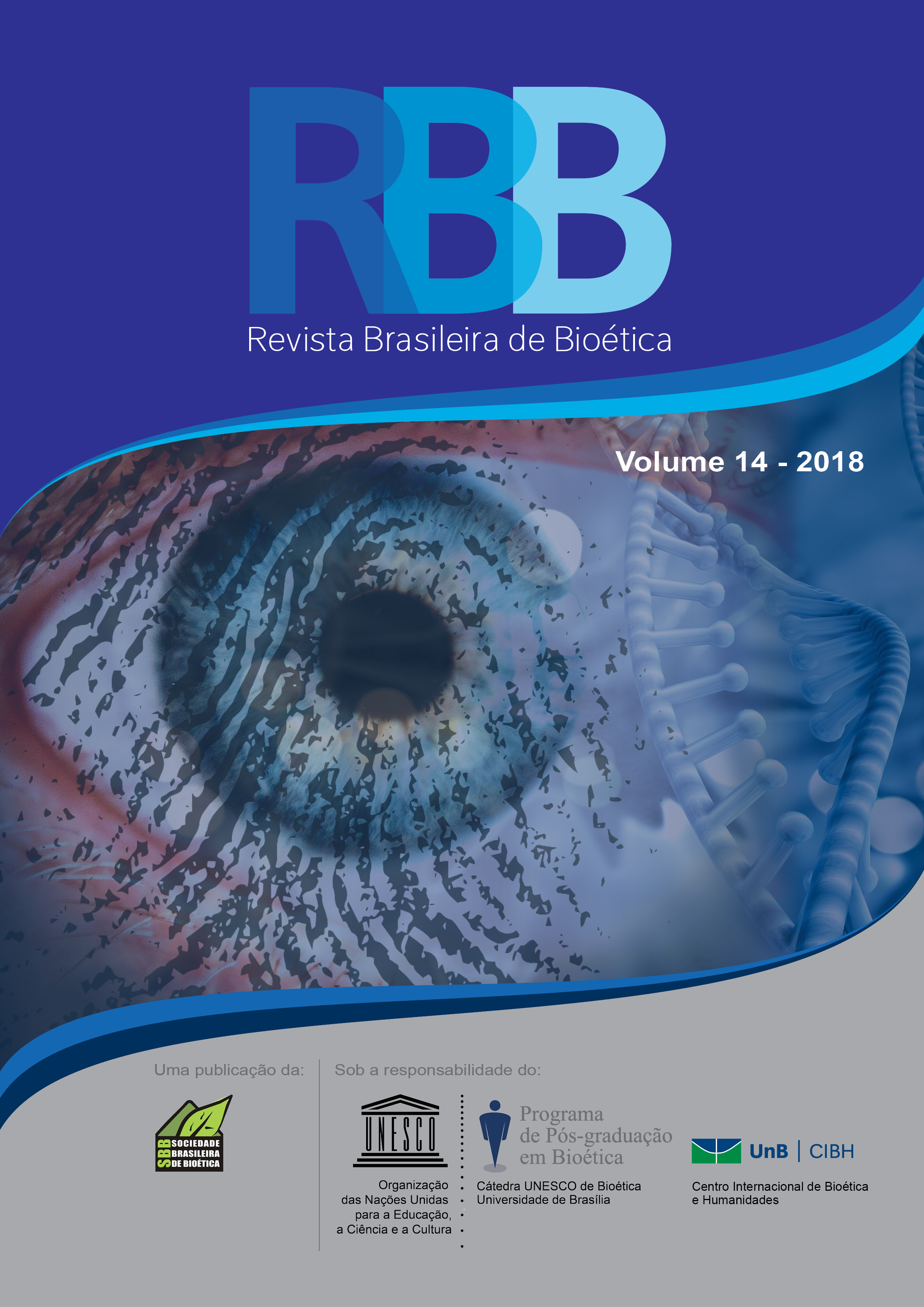Reproductive rights in the context of invitro fertilization and the problem of surplus embryos
DOI:
https://doi.org/10.26512/rbb.v14i0.9382Keywords:
Reproductive rights, assisted reproduction, surplus embryos, oocytes vitrification.Abstract
Today, technological advancement is closely tied to the means of acquiring power and lacks evaluative constructs. It justifies the growing need for a further strengthening of the legal protection of the extracorporeal embryo so that the Principle of Human Dignity is effectively implemented. The objective of this research is to define the reproductive rights. In a second moment, starting from the assumption that the extra-corporeal embryo is a person and, therefore, subject of personal rights, it intends to demonstrate the unconstitutionality of the production of surplus embryos and to propose the replace of this practice by the cryopreservation of oocytes vitrification - a promising new technique for assisted human reproduction. The legal proposed research is both comprehensive and purposeful.
Downloads
References
Andorno R. Bioética y dignidade de la persona. Madri: Tecnos, 2012.
Ballester FJB. El equívoco de la esterilidad: ¿enfermedad o manipulación? Revista de Bioética y Derecho, núm. 23, set., p. 21-34, 2011.
Castro IN. De la dignidade del embrión: reflexiones em torno a la vida humana naciente. Madrid: Universidad Pontificia Comillas, 2008CORRÊA, M. C. D. V. Ética e reprodução assistida: a medicalização do desejo de filhos. Bioética, vol 9, no 2, p. 71-82, 2001
Chian RC, Huang JY, Tan SL, Lucena E et al. Obstetric and perinatal outcome in 200 infants conceived from vitrified oocytes. Reproductive Biomedicine Online. vol 16, no 5, mar.. 2008, p. 608-610.
Cobo A, Meseguer M, Remohí J, Pellicer A. A Use of cryo-banked oocytes in an ovum donation programme: a prospective, randomized, controlled, clinical trial. Human Reproduction, vol.25, no.9, 2010, p. 2239”“2246.
Corrêa MCDV, Loyola MA. Tecnologias de reprodução assistida no Brasil: opções para ampliar o acesso. Physis. set.; vol 3, p.753-777, 2015.
Davies M.J, Moore VM, WILLSON KJ, ESSEN PV et al. Reproductive Technologies and the Risk of Birth Defects. New England Journal of Medicine, v. 366, n.19, p. 1803-1813, maio, 2012.
Dowling-Lacey D, Mayer JF, Jones E, Bocca S et al. Live birth from a frozen”“thawed pronuclear stage embryo almost 20 years after its cryopreservation. Fertil Steril 2011; 95: 1120.
Engelhardt HT. Fundamentos da Bioética. São Paulo: Edições Loyola, 2008.
Hansen M, Bower C, Milne E, De Klerk N. Assisted reproductive technologies and the risk of birth defects: a systematic revie. Human Reproduction. vol.20, no.2, 2005 p. 328”“338.
Harris J. The concept of the person and the value of life. In: Kennedy Institute of Ethics Journal, v.9, n.4, dez/1999, p.293-308.
Moratalla NL, Huerta AZ, Bueno DL. Riesgos para la salud de los nascidos por las técnicas de fecundación asistida: la punta de um iceberg. In: Cuadernos de Bioética, Murcia, vol. XXIII, no 2, 2012, p. 467-527.
Noyes N, Porcu E, Borini A. Over 900 oocyte cryopreservation babies born with no apparent increase in congenital anomalies. Reproductive Biomedicine Online, vol. 18, no 6, abril, 2009, p. 769-776.
Ortega Y Gasset J. Meditação sobre a técnica. Trad. de José Francisco Pinto de Almeida Oliveira ”“ Rio de Janeiro: Instituto Liberal, 1991.
Palazzani L. Os significados do conceito filosófico de pessoa e suas implicações no debate atual sobre o estatuto do embrião humano. In: Correa, Juan De Dios Vial; Sgreccia, Elio (Orgs.). Identidade e estatuto do embrião humano. Atas da terceira assembleia da Pontifícia Academia para a vida. Bauruaru: Edusc, 2007.
Piovesan F; Pirrota WRB. A proteção dos direitos reprodutivos no direito internacional e no direito interno. In: Piovesan, Flávia, Temas de Direitos humanos, 7a edição, São Paulo: Saraiva, 2014, p. 397- 428.
Rienzi L, Romano S, Albricci L, Maggiulli R et.al. Embryo development of fresh ‘versus’ vitrified metaphase II oocytes after ICSI: a prospective randomized sibling-oocyte study. Human Reproduction, vol.25, no.1, 2010, p. 66”“73.
Singer P. Ética Prática. São Paulo: Martins Fontes, 1994.
Spaemann R. Personas: acerca de la distinción entre “algo” y “alguien”. Navarra: EUNSA, 2010.
Neves MCP. Mudam-se os tempos, manda a vontade. O direito e o desejo de ter um filho. In: Ascensão, José de Oliveira (Org.). Estudos de Direito da Bioética. Lisboa: Edições Almedina, v.3, 2009, p. 131-149.
United Nations. Report of the International Conference on Population and Development, Cairo, 5-13 sepetember, 1994. New York: United Nations, 1995.
Wennerholm UB, Söderström-Anttila V, Bergh C, Aittomäki K et al. Children born after cryopreservation of embryos or oocytes: a systematic review of outcome data. Human Reproduction, vol.24, no.9, 2009, p. 2158”“2172.
Scherrer U et al. Systemic and Pulmonary Vascular Dysfunction in Children Conceived by Assisted Reproductive Technologies. Circulation, v.125, n.15, p. 1890-1896, mar., 2012.
World Health Organization. Constitution of the World Health Organization. Basic Documents, Forty-fifth edition, Supplement, October 2006.



